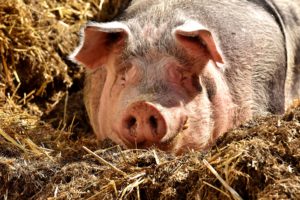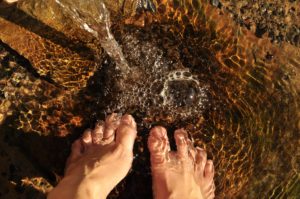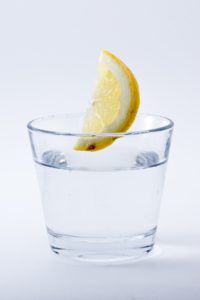 I’m sitting here sweating like a pig. Do pigs actually sweat? At the moment, I don’t really care, all I know is that this menopause phase of life is still challenging me. It’s the hot flashes, which result in interesting mood swings and insomnia, which results in handling the daily rhythms of life with a little (some days a lot) less patience. If you’re a woman in her 40’s or 50’s maybe you can relate?
I’m sitting here sweating like a pig. Do pigs actually sweat? At the moment, I don’t really care, all I know is that this menopause phase of life is still challenging me. It’s the hot flashes, which result in interesting mood swings and insomnia, which results in handling the daily rhythms of life with a little (some days a lot) less patience. If you’re a woman in her 40’s or 50’s maybe you can relate?
Here’s some background information: I am 52 years old. I have lived with type 1 diabetes for the past 36 years. That in and of itself, from a Western medicine perspective, doesn’t set me up to have a more difficult experience through peri-menopause and menopause. However, since I’ve been going to acupuncture on a regular basis for almost 30 years, from an Eastern, Chinese medicine perspective I’m yin deficient, which is aggravated by my post- menopause experience, which also causes yin deficiency.
In addition, I am a two time estrogen receptor positive breast cancer survivor. As an aside, I am now cancer free and plan to stay that way. This means that I cannot avail myself of hormone replacement therapy. In fact, if I was more compliant patient, I would be on heavy duty drugs that would remove all estrogen from my body. Thus, I am left searching high and low for alternative methods to handle the symptoms of hot flashes and the cold flashes that seem to follow the hot flashes. I’ve assembled a few of my favorite strategies for keeping my hot flashes to fewer than seven of them in a 24 hour period.
Before I get to my 7 strategies, I want to share a little bit more about what the heck is going on in the body.
What are hot flashes?
Since I’ve been having so many of them, I decided I wanted to better understand what they are. It turns out, about 80 percent of menopausal women in this country have hot flashes, some for as long as 15 years. Yes, that means they do seem to last forever. This means I’ve got a lot of company through this journey. I’m just in year five of what could last 15 years, only 10 more years to go! This has me thinking of menopause as an ultra-endurance event. Forget a marathon, this is more like a 100 mile foot race through the mountains in the dessert.
Hot flashes and flushes can last for a few seconds or up to five minutes. These surges of intense heat appear to be caused by the hypothalamus gland, which regulates your body’s temperature. Heat occurs when it isn’t able to adjust to changing hormone levels. Even a slight alteration in this thermostat can cause flushing and periods of intense heat. Low estrogen may be one reason for a malfunctioning hypothalamus, or it may be due to an imbalance of naturally occurring brain opiates caused by lowered estrogens and progesterone.
These waves of heat surge over the body making one feel suffocatingly hot. In my case, I feel as if my whole body has caught fire and I often sweat profusely. For me, the desire to remove my clothing to find coolness and relief becomes my main focus. All else fades for a moment as my entire attention is consumed with the flush and the heat. So far, I’ve managed to keep my clothes on in public.
In peri-menopause, the body becomes overwhelmed with these ups and downs, and struggles to balance the levels and ratios of the hormones that interact for temperature regulation. This effort can influence your entire endocrine system. Imagine that… as a person with diabetes the endocrine system is already working overtime, all the time. The endocrine system is the system of glands that sends hormonal messages throughout our body. It’s also the root source for wide-ranging symptoms including fatigue, thinning hair, sleep difficulties and joint discomfort. (oh great.)
Cold flash follows the Hot Flash
A cold flash, often called the chills, is a sudden feeling of intense cold, usually accompanied with shivering. The difference between cold and shivering as a reaction to weather as opposed to a medical condition is the unexpected situation in which it happens. The brain monitors and regulates the body’s temperature, according to the University of Illinois Medical Center, and when something throws it off balance, such as menopause, chemicals will travel through the bloodstream, causing the brain to raise the normal temperature set point. This causes you to feel cold and shiver to help your body’s temperature rise to meet the new set point.
Fancy name for all this flashing: “Narrowed Thermonuetral Zone”
I like knowing that I’m not actually going crazy, and that there’s a big scientific name for what is happening in my body. Robert R. Freedman, a professor of psychiatry and behavioral neurosciences at Wayne State University in Detroit, in a 2002 article published online by the North American Menopause Society, describes a study that suggested a “narrowed thermoneutral zone” in menopausal women. The thermoneutral zone is the body temperature at which neither sweating nor shivering takes place.
When body temperature rises above or below a certain threshold, we sweat or shiver respectively. In this study of symptomatic menopausal women, the shivering threshold was higher and the sweating threshold was lower, reducing the thermoneutral zone, so that even slight changes in core body temperature caused a hot flash or chills.
Now, armed with an intellectual understanding of what is happening in my body, I went in search of solutions I could use.
Here are my top 7 Natural Solutions for Hotflashes
May we all find relief!
Natural Tip #1: Acupuncture and Herbs
Since I can’t find relief using Western drugs, I am grateful that acupuncture and tailored-to-me-herbs are an excellent and helpful option. My acupuncture team knows me, knows my medical history and they are smart, scientific women who make sure that any herbal or plant-based solutions are safe for my situation. There are lots of options available from nature. I’m not going to list the many options here, as I believe we are all best served talking to an expert.
Herbal solutions are called phytotherapy. Phytotherapies can help relieve even severe symptoms for all women. Certain herbs, known as phytocrines, share important features with our own hormones which allow them to provide symptom relief, as well as to bolster your body’s own ability to make and use hormones. Phytotherapy is especially effective when the herbs are adaptogenic, meaning they have the power to adapt to the specific needs of your body. This is very different from the “one-size-fits-all” approach in most conventional settings.
My team and I have found that about every 3 to 6 months we have to change my phytotherapy protocol. It seems that things just keep on changing. It’s an ever moving target.
Natural Tip #2: Yoga: Legs Up the Wall Pose
 To deal with the stress of all these flashes, the hot and the cold ones, I find that a saving grace is my regular yoga and meditation practice. There is one pose that seems to be especially helpful. I try to do Legs Up The Wall once a day for at least 10 minutes. I notice when I miss a day.
To deal with the stress of all these flashes, the hot and the cold ones, I find that a saving grace is my regular yoga and meditation practice. There is one pose that seems to be especially helpful. I try to do Legs Up The Wall once a day for at least 10 minutes. I notice when I miss a day.
It’s possible that one of the reasons this is such a helpful pose is that it does something good to the circulation system in the body. All that hot flashing is officially called vasodialation, and has to do with circulation. Legs Up The Wall is an easy one to do. I suggest you give it a try.
Natural Tip #3: Warming the Feet in Water Before Bedtime
 Speaking of circulation, and having a narrow thermonuetral zone, moderating the external thermostat in an effort to support the internal thermostat becomes critical. My acupuncturist recently let me in on a tip that I can’t find anywhere on the internet, but I’ve been doing for over a week now and it does seem to help.
Speaking of circulation, and having a narrow thermonuetral zone, moderating the external thermostat in an effort to support the internal thermostat becomes critical. My acupuncturist recently let me in on a tip that I can’t find anywhere on the internet, but I’ve been doing for over a week now and it does seem to help.
Carol LeCroy of AcupuncturePlus in Denver, Colorado suggested that as I brush my teeth at night, that I stand in the tub full of warm to hot water up to my ankles. The idea is to warm the body from the bottom up. Being ever contrary, I countered her suggestion, saying that I already put a warm heating pad in my bed to warm my feet. She said there’s something soothing to the nervous system and circulation to be warmed by water.
I trust Carol, so that’s what I’ve been doing. After about 5 minutes in the water, I pat my feet dry and put on warm cotton socks, taking care to keep my feet warm until I’m in my bed.
Apparently part of the reason this strategy works is that the hot flashing is heat from the center of the body going upward. By warming the feet it draws the circulation downward, and keeps the heat in the body everywhere. I do find it calming, and maybe so far I’m having fewer hot flashes while I sleep, or rather hot flashes that wake me up, panting and drenched. The night ones really are the worst.
Natural Tip #4: Drink Lemon Infused Water
 The simple, garden-variety lemon is very much understated. Lemons are very common and we see them everywhere. We use them to make lemonade, mix them into our drinks to add a little zing, they remove hard stains, are an all-around deodorizer and air freshener and we use them in our cooking as both an ingredient and garnish. Who knew?
The simple, garden-variety lemon is very much understated. Lemons are very common and we see them everywhere. We use them to make lemonade, mix them into our drinks to add a little zing, they remove hard stains, are an all-around deodorizer and air freshener and we use them in our cooking as both an ingredient and garnish. Who knew?
In traditional medicine, the lemon is widely known for its healing powers and is used in many different ways. In fact, the lemon is so powerful that it was used by the Romans as their cure for all types of poison. Again, who knew!
Turns out hydration and circulation and temperature moderation are all linked up. So, the goal is to stay hydrated and adding fresh lemon juice (no sugar, just the lemon) helps the body stay more alkaline. I’ve been putting fresh lemon into my water for a few weeks now and I’m not sure it’s helping, but my water tastes better and every time I taste that lemon zing, it acts as a reminder to breathe deeply and relax, and that must be helping my circulation, right?!
Natural Tip #5: Caffeine and Alcohol Ban, Eat Good Food
 Cooling down your body is a theme we have going here. Therefore, it only makes sense to lower your intake of foods that create heat in your body, such as fatty foods, sugars, and spicy foods. Tone down any spicy foods you might like from “very hot” to “warm.” In addition, alcohol and caffeine wreck havoc on the menopausal body.
Cooling down your body is a theme we have going here. Therefore, it only makes sense to lower your intake of foods that create heat in your body, such as fatty foods, sugars, and spicy foods. Tone down any spicy foods you might like from “very hot” to “warm.” In addition, alcohol and caffeine wreck havoc on the menopausal body.
It’s time to reduce or eliminate caffeine —— it can contribute to hot flashes. In the testing I’ve done on myself, it’s true, when I’m drinking caffeine, the hot flashing is much worse. Black tea contains less caffeine than coffee. Green tea is lower in caffeine than black. And herb teas have none. Rooibus, or red bush tea, is a hearty herb that looks and tastes a lot like black tea and contains no caffeine at all. At the very least, reduce the number of cups of caffeinated beverages. And remember, colas have caffeine and sugar (or artificial sweeteners that may cause other reactions).
And more bummer news for some of us: it’s time to reduce or eliminate alcohol. According to Harvard Medical School, alcohol can act as a trigger for hot flashes. Darn it. Once again, in my own unscientific testing on myself, when I drink wine (the only alcohol I really like) my hot flashing incidents go up.
While we’re talking about no caffeine and no alcohol, might as well think about nutrition in general. Everywhere I looked everyone mentions good nutrition. Basically the message is: Make good nutrition a top priority – do not skip meals: Maintaining a balanced diet may seem simplistic, but taking the time to eat three well-balanced meals a day, including servings of grains and complex carbohydrates, healthy low-fat proteins, multiple fruits and vegetables while limiting fats, will not only reduce hot flashes and menopausal symptoms but will improve overall health and stabilize weight. Flaxseed, which has been shown in scientific studies to help reduce hot flashes is inexpensive, tastes good, and is easy to incorporate into almost any recipe.
Here are a couple of basic helpful strategies:
Add more fruits and vegetables —— they cool your body. Lemon water, as mentioned above, is a very good coolant, as are salads and fresh fruit. And don’t forget to drink plenty of water throughout the day. Make a lemonade sweetened with stevia if you like.
Add soy to your diet. This one is somewhat controversial, but since I’m mostly vegan, I do eat up to two servings of good soy everyday. Isoflavones found in soy foods may help reduce your hot flashes even better than soy isoflavone supplements. There are co-factors in soy, missing in the isoflavones alone, that may reduce hot flashes. In Japan, where soy is more prevalent in diets, there is no word for “hot flashes.” The phenomenon simply doesn’t exist. I think I want to move to Japan for the next 10 years. Do you think that would help?
Natural Tip #6: Regular Exercise
I am happy to say, that as an athlete I was pleased to discover that my passion for fitness is helping me through this menopausal journey. This is what I read in multiple sources: Multiple scientific studies have shown exercise can eliminate hot flashes and their overall severity – while also reducing depression. As an added benefit, research shows that weight bearing exercise will maintain bone density in menopausal women. Physical activity for one hour three or more times per week – whether walking with a friend, swimming, dancing or bicycling – can greatly ease menopausal symptoms and hot flashes.
I have found that having an athletic goal, a race, a Tour de Cure, to keep me on track makes all the difference.
Natural Tip #7: Deep Breathing & Menopause as Spiritual Practice
And here’s my last tip, use this experience, as long or as short as it lasts, as a spiritual teacher. My meditation teacher has a note on the wall of his office near the phone. It says, “This is how it is now.” All this change and flashing, well, when it’s happening, that’s what’s happening. I get to choose: I can expend valuable energy wishing it wasn’t happening, trying to stop it, despairing, frustrated. Or, I can stop, allow the flash to happen, and listen inside to what message I might receive.
To all my sisters on the menopause journey, may you find insight and relief. Let me know how it’s going. I love to hear from you!